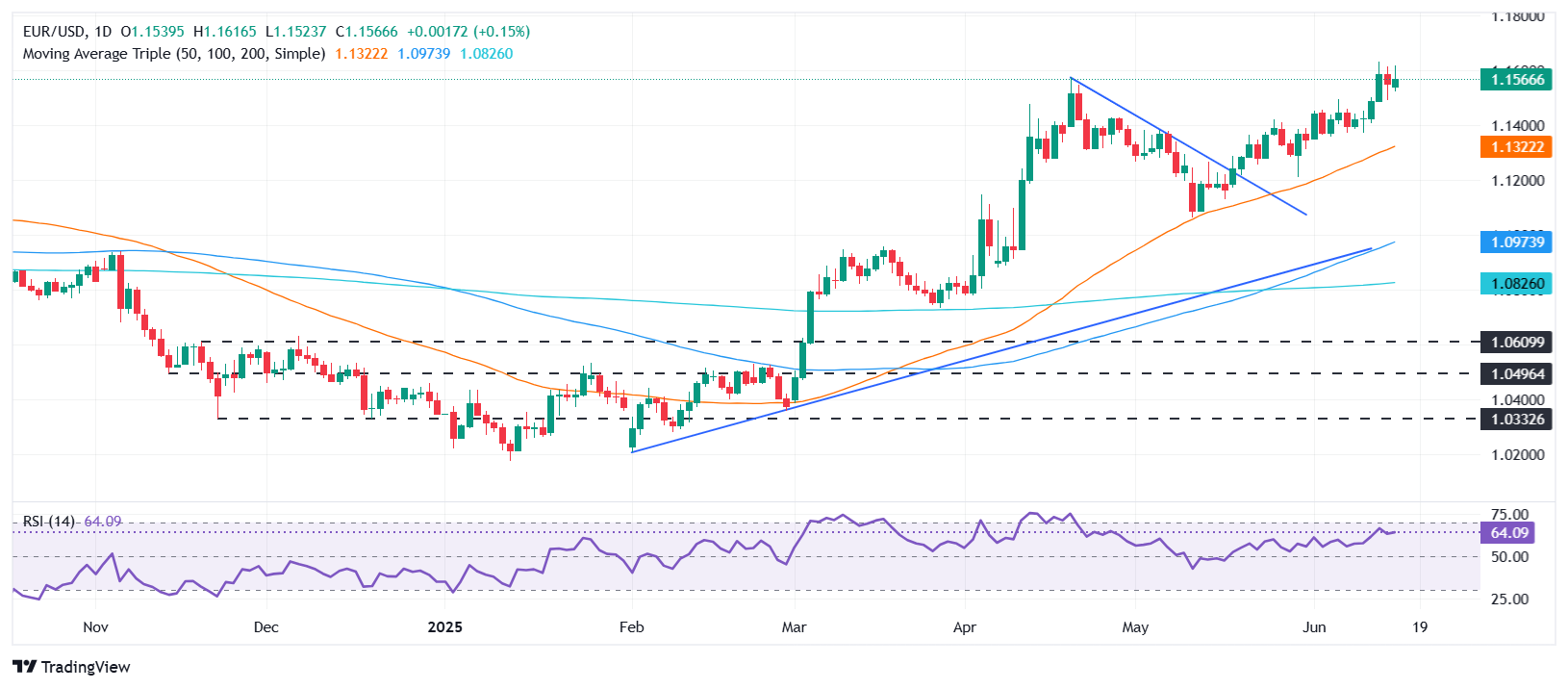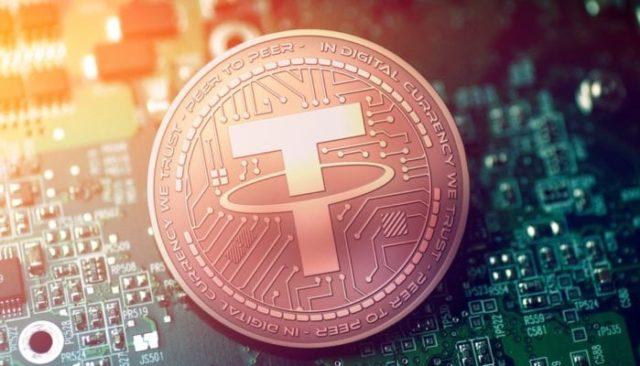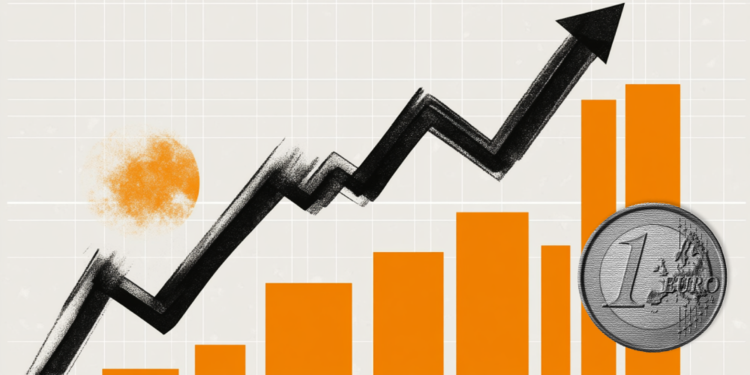- EUR/USD rises to 1,1572 while the market ignores new missile attacks to Israel.
- The moderate Giro of the Fed in the feeling follows the weak manufacturing data of the US Empire State.
- ECB officials speak while operators expect the June 18 policy decision of the Fed and projections.
The EUR/USD recovered after registering a loss of 0.25% last Friday, when hostilities began between Israel and Iran, which increased the attractiveness of the dollar. However, with both parties willing to continue exchanging blows and a slightly diminished risk of becoming a regional conflict, an improvement in appetite due to the risk supports the shared currency.
The EUR/USD quotes 1,1572, with an increase of 0.17%, after reaching a daily minimum of 1,1523. The dollar is in a weak position. A scarce economic agenda in the United States (USA) revealed that manufacturing activity in the New York area collapsed to its weakest reading since the minimum of two years in March, indicating the continuous economic slowdown.
Meanwhile, most news headlines focus on the Israel-Iran conflict, which is expected to continue despite the pressure of the White House over Tehran to reach an agreement. Iranian state television announced that a new wave of attacks with Iranian missiles to Israel has begun, pointing to Tel Aviv and Haifa.
Previously, the Economic Economic Agenda (EU) presented speakers of the European Central Bank (ECB), headed by Vice President Luis de Guindos and the president of Bundesbank Joachim Nagel. Other data showed that S&P reaffirmed Germany’s credit solvency with a ‘AAA’ rating and a stable perspective.
The market mood improved even though the conflict in the Middle East continued. The operators are observing the monetary policy decision of the Federal Reserve (FED) of June 18, followed by the press conference of the president of the FED, Jerome Powell. Along with this, Fed officials would update their economic projections, which would be crucial to establish the course of monetary policy and could influence the EUR/USD direction.
What moves the market today: EUR/USD is recovered as the market feeling improves
- Despite the withdrawal, the EUR/USD seems to be prepared to resume its upward trend, since ECB officials have become slightly more aggressive, and the news has emerged that conversations between the US and China could provide relief to investors. However, an escalation of the Israel-Iran war exerts the downward pressure.
- The ECB Guindos commented that the EUR/USD in 1.15 is not a great obstacle, since the appreciation is not fast and volatility is not extreme. He said the markets understood the position of the ECB that the bank is close to its target. He added that the risk of not reaching inflation is minimal and that inflation risks are balanced.
- The NAGEL of the ECB said that it makes no sense to point out a pause or cut of rates, given the exceptional uncertainty.
- The Empire State Manufacturing Index in New York in June collapsed 16 points, from the contraction of -5.5 of May, painting a gloomy economic panorama for the New York region.
- On Tuesday, the US retail sales are expected to show a contraction of -0.7%, compared to the growth of 0.1% in April, according to the US Census Office. If the data is presented as expected, sales will fall to its second lowest level after reading of -0.9% February.
- From June 17 to 18, the Fed will hold its last monetary policy meeting. Operators have discounted that rates will remain unchanged, but are attentive to the update of the Summary of Economic Projections (SEP).
- On the other side of the Atlantic, the EU economic agenda will present the ZEW survey of economic feeling for June, which is projected to increase from 11.6 in May to 23.5 Mom.
- The actors in the financial market do not expect the ECB to reduce their deposit installation rate in 25 basic points (PBS) at the July monetary policy meeting.
EURO TECHNICAL PERSPECTIVE: EUR/USD is maintained above 1,1550, it clings to profits
The EUR/USD upward trend is maintained, although it faces strong resistance in 1,1600. The reluctance of buyers to decisively clear this level has opened the door to a setback. The relative force index (RSI) indicates a lack of commitment between buyers, since the RSI, despite being bullish, approaches its neutral line.
If the EUR/USD falls below 1,1550, the next support level would be 1,1500. If it is exceeded, the next stop would be the figure of 1,1450, followed by the simple mobile average (SMA) of 20 days in 1,1386.
On the other hand, if the EUR/USD remains above 1,1550, buyers could take the exchange rate to 1,1614, the June 16 peak, before 1,1600 to test the maximum of the year to date (YTD) in 1,1631. Then, 1,1700 is located.

Euro Faqs
The euro is the currency of the 19 countries of the European Union that belong to the Eurozone. It is the second most negotiated currency in the world, behind the US dollar. In 2022, it represented 31 % of all foreign exchange transactions, with an average daily business volume of more than 2.2 billion dollars a day. The EUR/USD is the most negotiated currency pair in the world, with an estimate of 30 %of all transactions, followed by the EUR/JPY (4 %), the EUR/GBP (3 %) and the EUR/AU (2 %).
The European Central Bank (ECB), based in Frankfurt (Germany), is the Eurozone reserve bank. The ECB establishes interest rates and manages monetary policy. The main mandate of the ECB is to maintain price stability, which means controlling inflation or stimulating growth. Its main tool is the rise or decrease in interest rates. Relatively high interest rates (or the expectation of higher types) usually benefit the euro and vice versa. The GOVERNMENT BOOK of the ECB makes decisions about monetary policy in meetings that are held eight times a year. The decisions are made by the directors of the National Banks of the Eurozone and six permanent members, including the president of the ECB, Christine Lagarde.
Eurozone inflation data, measured by the harmonized consumer prices index (IPCA), are an important economic indicator for the euro. If inflation increases more than expected, especially if it exceeds 2% of the ECB, it forces the ECB to rise interest rates to control it again. Relatively high interest rates compared to their counterparts usually benefit the euro, since they make the region more attractive as a place for global investors to deposit their money.
Published data measure the health of the economy and can have an impact on the euro. Indicators such as GDP, manufacturing and services PMIs, employment and consumer trust surveys can influence the direction of the single currency. A strong economy is good for the euro. Not only attracts more foreign investment, but it can encourage the ECB to raise interest rates, which will directly strengthen the euro. Otherwise, if economic data is weak, the euro is likely to fall. The economic data of the four largest economies in the euro zone (Germany, France, Italy and Spain) are especially significant, since they represent 75% of the economy of the euro area.
Another important fact that is published on the euro is the commercial balance. This indicator measures the difference between what a country earns with its exports and what you spend on imports during a given period. If a country produces highly demanded export products, its currency will gain value simply by the additional demand created by foreign buyers seeking to buy those goods. Therefore, a positive net trade balance strengthens a currency and vice versa in the case of a negative balance
Source: Fx Street
I am Joshua Winder, a senior-level journalist and editor at World Stock Market. I specialize in covering news related to the stock market and economic trends. With more than 8 years of experience in this field, I have become an expert in financial reporting.







